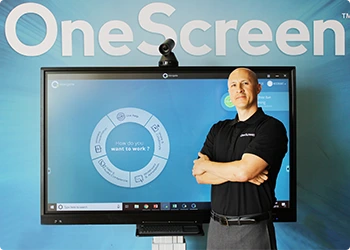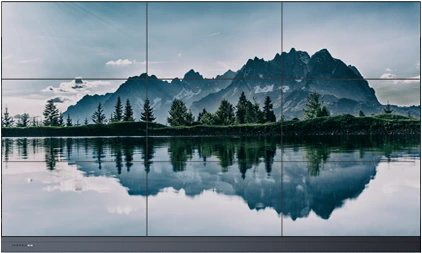
Take a look around and you’ll see smart screens everywhere. Some displays are interactive, meaning information on the screen changes based on your touch, while others are more like digital signs or giant TVs. Some are wall-mounted and others can be moved around on rolling carts. There are outdoor screens as big as billboards and indoor displays that look like super-sized tablets.
OneScreen builds all kinds of displays to address the unique needs of any organization - from schools to corporate headquarters, from churches to fire stations, from government agencies to healthcare providers.
Often, the buyers come to us without really knowing what kind of display would make the most sense for what they want to achieve.
One of the most common questions we hear is:
“Should I get an interactive display or a video wall?”
While we’re always happy to talk about your specific goals, the information below can help point you in the right direction.
Choosing between the two really boils down to deciding from the start what you want it to do for you in the end.
- Interactive Displays: Ideal for classrooms, collaborative workspaces and any situation where teams come together using online tools.
- Video Walls: Perfect for spaces where visual impact and versatility are key – anywhere that people will gather and need to remember your message.
Here are some examples of where each one performs best.
Interactive Displays: Mastering Education and Collaboration
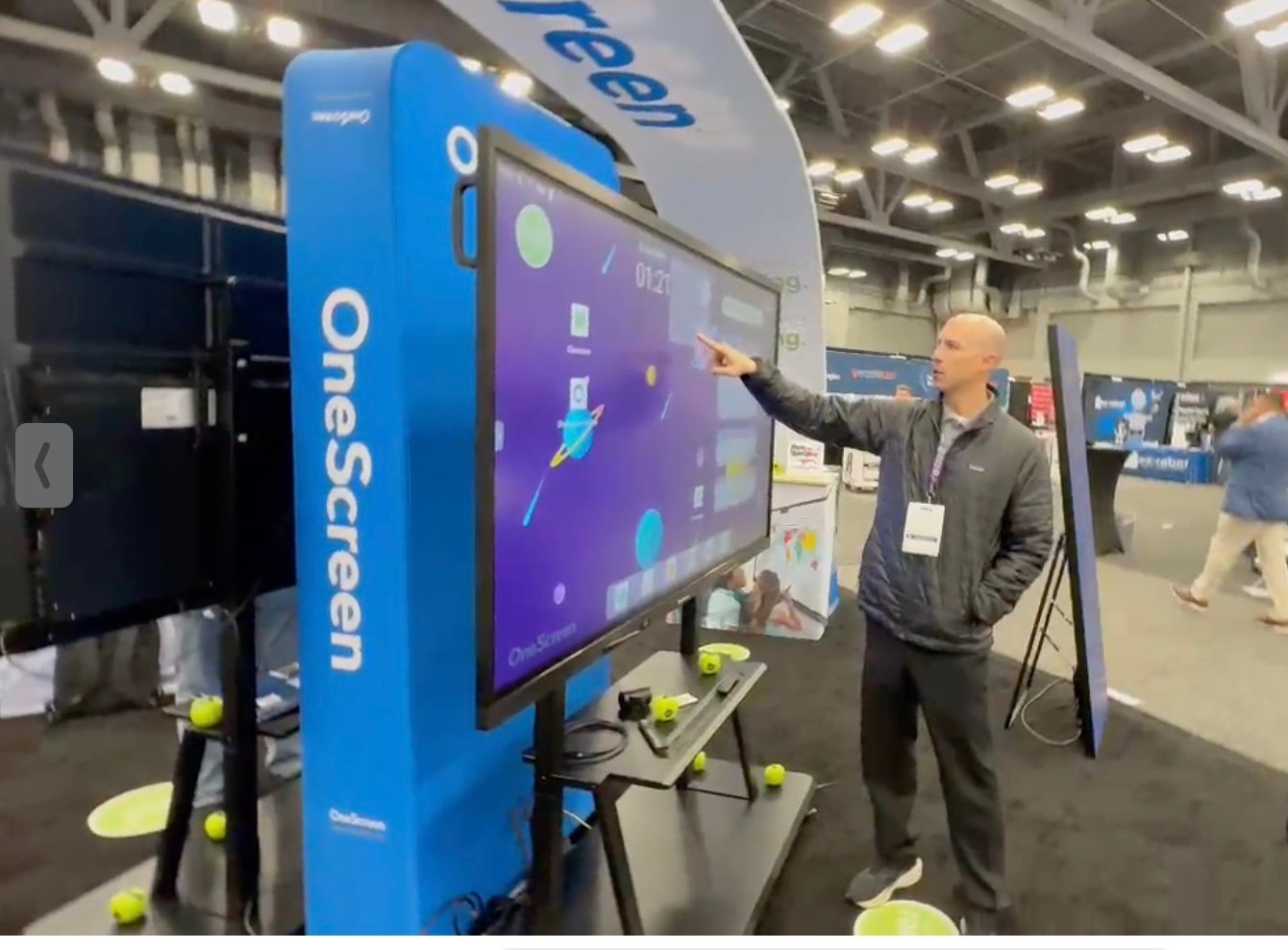
These digital workhorses combine the functions of a wireless projector for a presentation on your laptop, a video conferencing hub for your conference room, a giant smartphone on the wall that can run just about any app, and an interactive screen that lets you write notes with your finger and then turn those notes into shareable docs.
Who uses Interactive Displays?
Interactive displays open any room to all the resources of the internet, from apps to teleconferencing, creating a richer environment that keeps everyone actively engaged in the presentation.
Schools from Pre-K to Post-Grad
Interactive displays have become integral tools in modern classrooms, fostering interactive and engaging learning experiences. Teachers utilize them to deliver dynamic lessons, allowing students to actively participate in the learning process.
Interactive displays also find applications in collaborative projects, presentations, and group activities, promoting a more interactive and immersive educational environment.
Businesses for Their Conference Rooms
Businesses rely on interactive displays for making sales presentations to prospects, sharing critical data with their partners and staying up-to-date on all their financial metrics.
In the new hybrid world of work, interactive displays act as hubs of productivity tools to simplify collaboration among in-office and remote work teams.
Fire Stations in Readiness Training
First responders of all types, but especially firefighters and police trainers, have embraced interactive displays so new recruits know exactly what to do and how to do it. Video simulations and interactive scenarios enhance their decision-making skills in a controlled environment.
Interactive displays are ideal for navigating the complexities of emergency response training because they present realistic simulations of fire incidents, hazardous materials handling and rescue operations.
Powering Up Flow State
Interactive displays are perfect for any classroom or conference room. They make life easier for teachers, trainers, presenters, sales teams, and executives.
Which factors make interactive displays the best choice?
- Touch and Tactility: You don’t even need a stylus. Just walk right up and write notes or draw figures with your finger. The software can automatically convert the words to printed text and the figures to infographics.
- Versatility in Mobility: Touchscreens can be installed on the wall to expand the capabilities of your existing chalkboard/whiteboard. They can also be mounted on a cart to roll from room to room as needed.
- Collaborative Superpowers: With the ability to wirelessly connect to multiple devices, Touchscreens simplify collaboration. Imagine a seamless sharing of ideas, with multiple users contributing simultaneously from their laptops or mobile devices.
Video Walls: Creating Impactful Visual Experiences
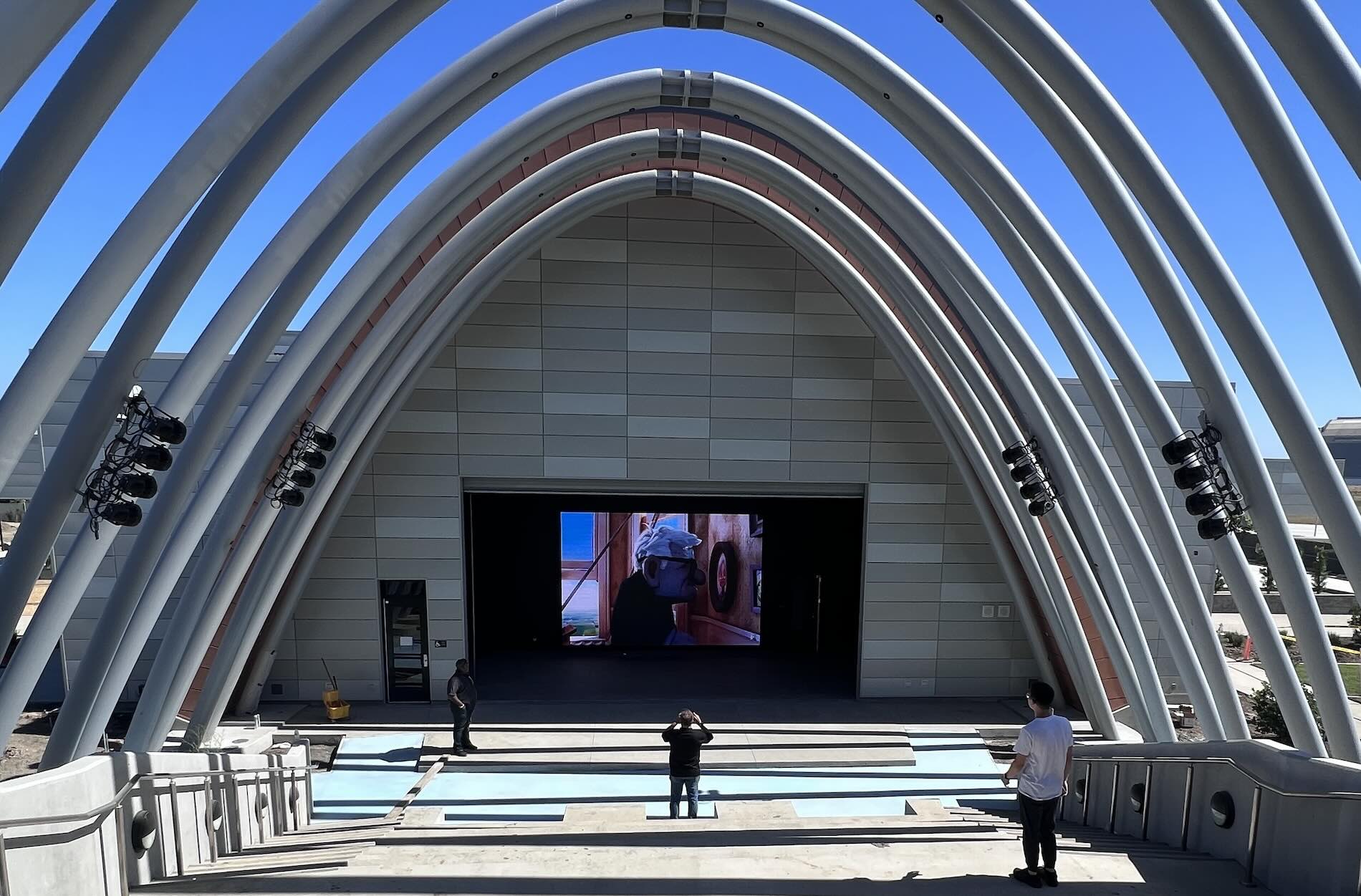
When you want to draw a crowd, earn money through advertising or make sure everyone can see you in a very large space, a video wall is the best message delivery system.
You may refer to video walls as digital signage, jumbotrons or giant screens. While an interactive display is a single flat panel that normally ranges in size from 55 to 86 inches, video walls can go as big as you need them to be. They are often made up of multiple panels, stretching from 138 up to 220 inches or more. In reality, there’s practically no limit to the size or shape of video walls, indoor or out.
Who uses video walls?
Making a memorable impression is the central benefit of a video wall. It can transform any space, indoor or out, into a multisensory event space. With the right software, you can choose from compelling visuals and audio templates that have already been created to give the viewer an immersive experience that’s hard to forget.
Retail and Corporate
A video wall can include a touchscreen, but most are not. It’s more common to use a video wall as a “Get It, Set It, Forget It” digital sign that runs printed or video messaging on auto-rotation, day and night.
Touchscreen video walls are starting to gain popularity, for example an interactive map at a business center maps or a sign with conditional messaging that responds to user requests. Video walls can sync up with social channels to display a flow of new material.
Churches and Houses of Worship
Churches are turning to video walls to enhance worship experiences and community engagement. Large, high-resolution displays contribute to a more immersive environment during religious services.
Video walls are used to showcase multimedia content, including worship lyrics, videos, and dynamic visual elements, creating a visually stunning and spiritually uplifting atmosphere.
Hospitals and Healthcare Facilities
In healthcare settings, video walls are employed for various purposes, such as displaying patient information, medical imaging, and educational content for staff.
Video walls in hospital lobbies provide informative content, wayfinding assistance, and even entertainment, creating a more welcoming and informative environment for patients and visitors.
Video walls also make life easier for conference halls, auditoriums, school cafeterias and government offices.
Which factors make video walls the best choice?
- Bringing Value to Empty Space: Like billboards on a highway, Video Walls turn any empty space into a valuable messaging center. They can stop foot traffic on a busy street or deliver essential messages at institutions. With the right presentation software, they can break through the noise of modern life and make an impression like no other technology.
- Architectural Flexibility: Your creativity isn’t limited to what’s on screen. The shape of the Video Walls conveys its own message. A display in the shape of an arrow can direct viewers while telling them what they need to know. They can be assembled to fit just about any space, even wrapping around corners or enduring all kinds of weather outdoors.
- Visual Impact: News control rooms and talk shows tend to feature Video Walls because their size alone conveys the importance of the information to any viewer. Important messages deserve a big, bold stage to tell their story. Speakers built into the Video Wall can multiply the impact of visuals with engaging audio.
So, Which One is Right for You?
Still not sure? That’s why we’re here. Contact OneScreen to find the exact match for the needs of your organization and the right partner to make sure it’s done right the first time. We can even custom-build a solution when the right one for you doesn’t exist yet.
Get all the details and specs on Interactive Displays or Video Walls here.

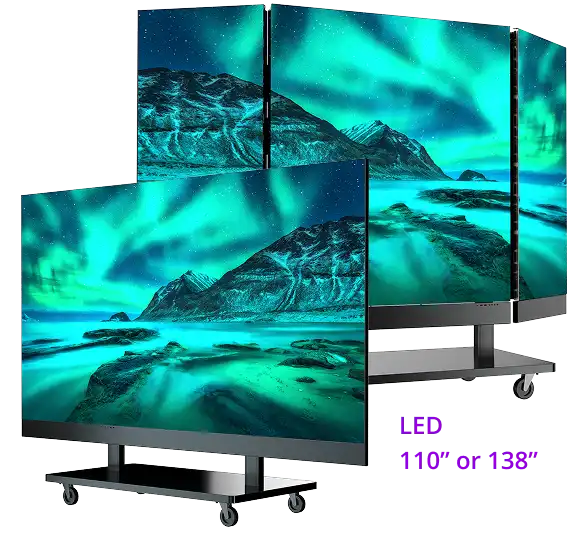
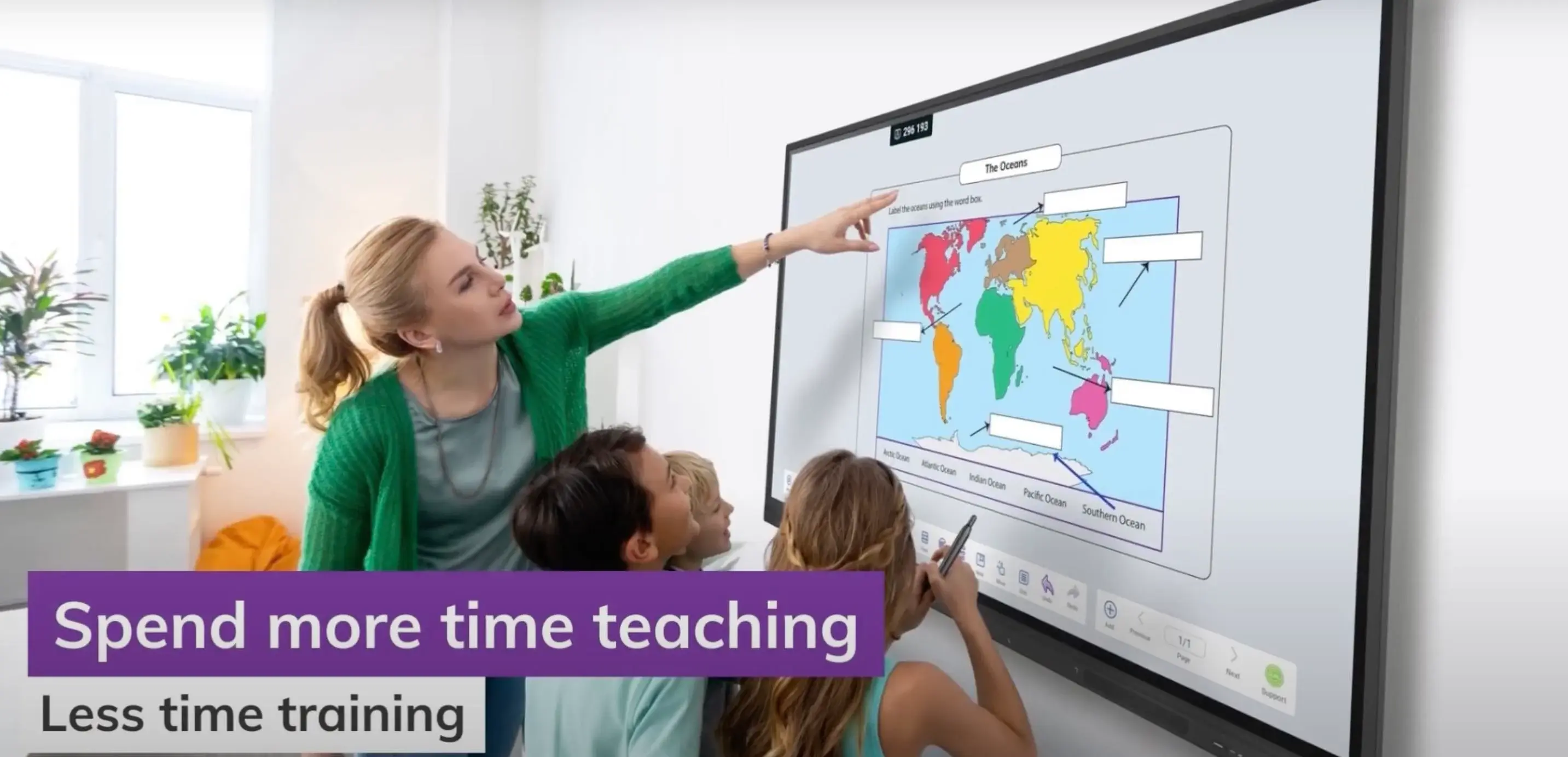

 Get a live demo now!
Get a live demo now!
